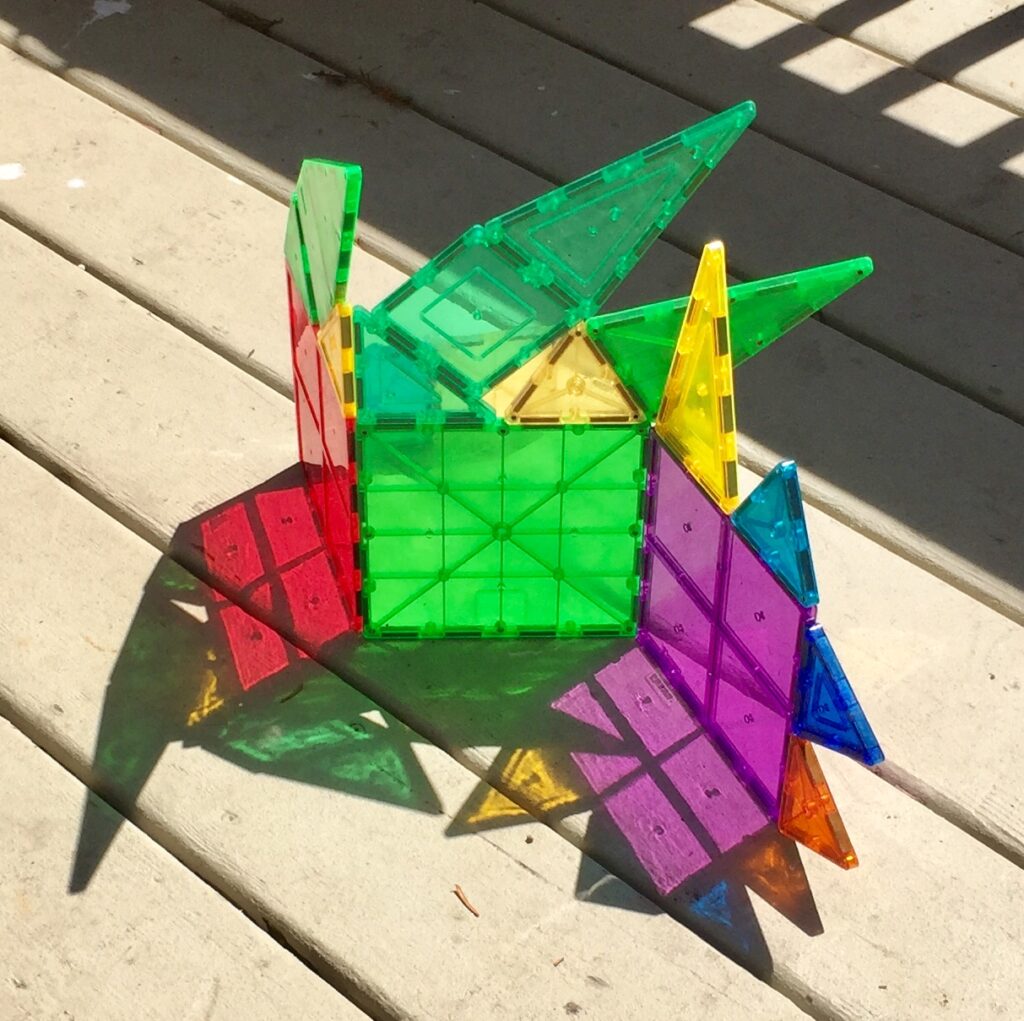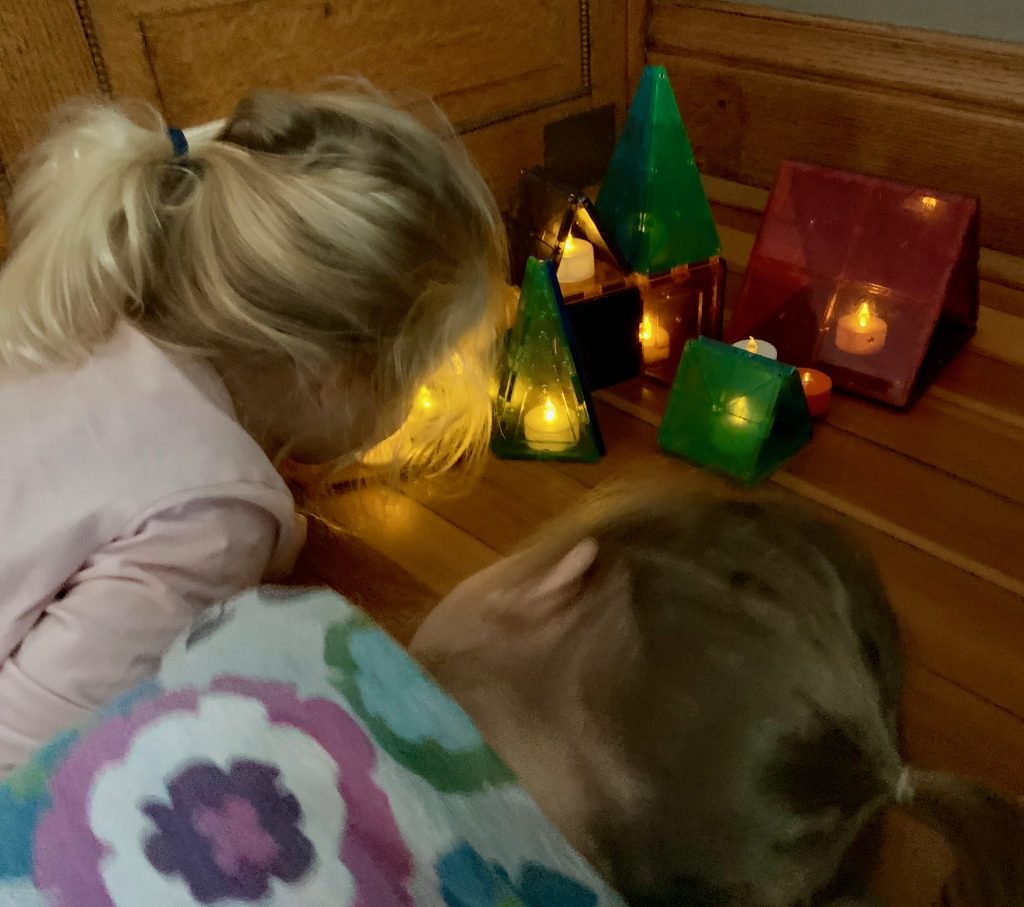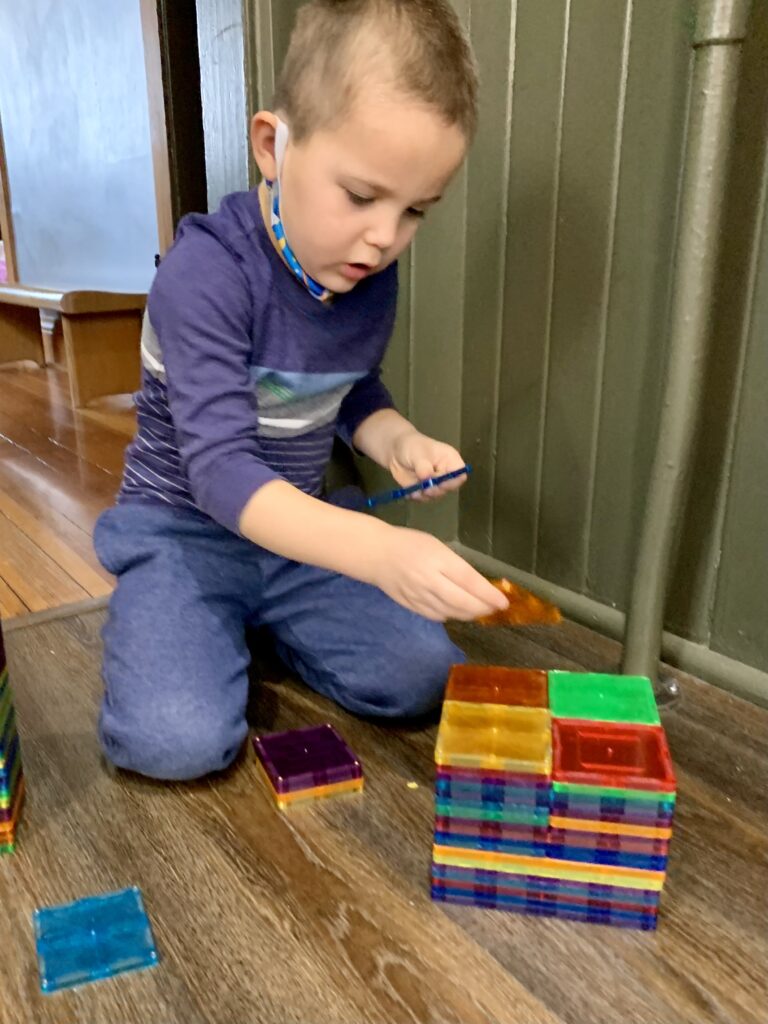Building STEAM Vocabulary With MAGNA-TILES

“Is this the eagle triangle?” Kiana asks, holding up a MAGNA-TILE for my inspection.
“An eagle triangle?” I respond, baffled. “Kiana, I don’t think I know what an eagle triangle is.”
“Yes you do,” she insists. “You were helping Joseph and you showed him two of the MAGNA-TILES. One looked like an eagle and the other looked like an ice cream cone.”
Ahh! Kiana was right. Earlier in the week, when Kiana’s older brother, Joseph, was studying for a math test, I grabbed some MAGNA-TILES to give him a hands-on lesson about shapes.
“Oh, Kiana, you were listening while I was teaching your brother about shapes. Yes, that is an equilateral triangle. “Equilateral” sounds a little bit like “eagle,” doesn’t it? See how all of the sides are the same? That means they are equal, which is why we call this an equilateral triangle. Can you find the isosceles triangle—the one that looks like an ice cream cone?”
As I talk to Kiana, it occurs to me that I should be more intentional about incorporating STEAM vocabulary words like these into the children’s MAGNA-TILE play.

For instance, as young children play with MAGNA-TILES, they become more familiar with 2-D flat shapes and 3-D solid shapes.
MAGNA-TILES and most other magnetic tile brands usually come in five basic shapes: small squares, large squares, equilateral triangles, isosceles triangles, and right triangles.
Why not use these 2-D terms—as well as 3-D terms such as cones, cubes, prisms, and pyramids—to describe the children’s block creations?
If you have older children (or you’re a teacher), you know that elementary school children have to memorize three triangle shapes: equilateral triangles, isosceles triangles and right triangles. Toddlers and preschoolers spend hours working with these shapes during their MAGNA-TILE play. Give them a head start by teaching them the names of these geometric shapes in early childhood!

MAGNA-TILES are good for more than geometry. I’m a big fan of MAGNA-TILES because they also promote the development of visual-spatial reasoning skills through hands-on play.
This is important because well-developed spatial skills strongly predict future achievement and attainment in science, technology, engineering, and mathematics. (Shea, Lubinski, & Benbow, 2001; Wai, Lubinski, & Benbow, 2009)
Spatial skills refer to abilities that involve visualizing and mentally manipulating objects, shapes and locations. In other words, it’s the ability to think and see in 3-D!
We use spatial skills every day. Visual-spatial processing tells you how far objects are from you and from each other. We use this skill when we drive, read a map or tie our shoes. Children with under-developed spatial awareness often have a harder time learning to read.
Preschoolers with strong spatial skills tend to have strong math and science skills. Building three-dimensional shapes with MAGNA-TILES helps children develop visual-spatial skills long before they have to take a geometry test (like our friend Joseph).
Spatial thinking is also an integral part of many scientific endeavors. Because science involves everything from small-cell biology to large-scale astronomy—and many of these fields can’t be directly observed—students and researchers must use diagrams and models to advance their own knowledge and communicate this knowledge to others. So when children work with 2-D diagrams and 3-D models, they are developing their spatial thinking AND learning how to think like scientists!

Young children are naturally drawn to STEAM exploration. As they learn through play throughout the day, they are constantly thinking about STEAM concepts such as size, shape, quantity, order, and speed.
As teachers of young children, we need to tap into this natural curiosity with intentional STEAM learning opportunities. We also need to incorporate STEAM vocabulary into their play in a genuine, authentic and intentional way through MAGNA-TILE moments like these!
Magna tiles give children the ability to use their imagination and learn the spatial differences with different shapes.
Magna Tiles have children learning engineering with all the structures that they build.
My children love Magna tiles. I love seeing their creations and I love helping them build their vocabulary